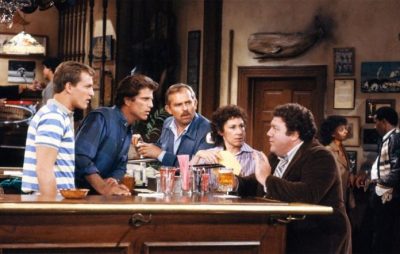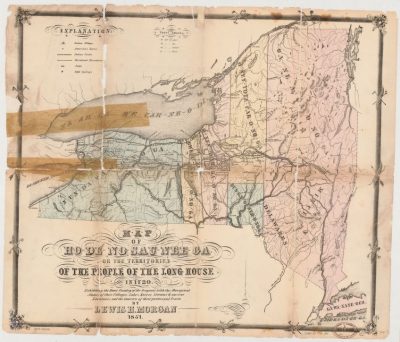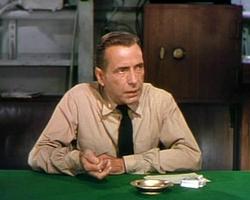
To fully understand the term “Indigenous,” one needs to examine not only when the term is used but when it is not. This blog is a continuation of an analysis based on an “Exchange: which was published in the journal of the American Historical Association (AHA) [Violence and Native American and Indigenous Studies (NAIS) and Native American and Indigenous Studies: Another Culture Wars Episode]. The more I thought about the issues directly raised in that exchange as reported in two previous blogs, the more I realized there were larger issues which extended beyond what was covered there. As part of this ongoing effort, I now turn to the apparent double standard in the non-use of the term in reference to Africans.
AFRICANS ARE NOT INDIGENOUS
As I mentioned in the previous blogs, I was involved with a local group formed in Westchester County, New York, as part of the 1619 quadricentennial. In the first meeting I inquired about the beginning of slavery in the County. During the course of events, I learned about an event in 1685 in the Town of Rye where I live involving the bringing ashore of nine “Angolans” to help build what became the Upper Mills, now Philipsburg Manor, on the other side of the County.
In my investigation of this event, I began to read about the African side of that event. To the best of knowledge, at no point in any of the articles and books that I read did a scholar refer to any of the African peoples involved as or use the word “Indigenous.” True, I was not looking for it at the time so I may simply not have noticed it. Also many of the readings were from the pre-Politically-Correct era of scholarship so at that time the only word used was “indigenous” in its traditional meaning.
As far as I can tell, African scholars follow the same path as European scholars. They routinely refer to the peoples, countries, kingdoms, and empires they are studying by their names. Actually, Indian scholars frequently do as well. But sometimes as brought out in the initial blog, the term “Indigenous” trumps all other considerations. Then the name of the Indian people practically disappears, a modern variation in the longstanding practice of the “Disappearing Indian.”
This contrast between the treatment of Indian and African can be seen in an event that occurred right as I was reading the “Exchange” in the AHA journal. The incident involves a statue in front of the American Museum of Natural History in New York. The statue has Teddy Roosevelt on a horse flanked by two males, one African and the other Indian. All three figures are physically fit. The standing figures represent areas where Roosevelt had visited and are unnamed.
While I am not an expert in such things, the Indian appears to be a Northern Plains Indian. Scholars are familiar with the Plains Indians by that name. I reported on them in two previous blogs: the 2020 annual conference of another history organization, the Organizations of American Historians (see the blogs The Organization of American Historians (OAH) Conference: What Would Have Been Presented? and Organization of American Historians Conference: II). While scholars can differentiate among Indians just as they do among Europeans, the general public has more of a tendency to lump all Indians together whereas they do differentiate between Nordic and Mediterranean white people.
In the press coverage of the statue, the reporting differed. The African figure to the right was always, as in every single time I read about or heard about it, referred to as an African. By contrast, the Indian initially was routinely designated as “Indigenous.” Africans are not Indigenous, Indians are. Over time, the Indian more and more was called a “Native American.”
A striking difference in treatment of African and Indian occurred on September 22, 2020, in the print edition of The New York Times. It would not have been as noticeable online. There was a contrast in the treatment on pages 8 and 9 respectively meaning when you held the paper up you could see both pages. The headline on the right side (page 9) was “Journalist Covering Indigenous Rallies Is Arrested.” The article repeatedly used the word “Indigenous” to refer to the protesters, the reporters, and the issues. In third column of the four-column article, the arrested reporter is identified as Haudenosaunee member of the Oneida Bear Clan. In the second column, another arrested reporter was identified as a member of Mohawk Turtle Clan.
The article on the left side (page 8) tells a different story. The subtitle is “Congolese Activist Sees Relics as Colonial Loot.” The opening sentence identifies the activist as Congolese. Throughout the article about the museum artifacts under question, they are referred to as African. There is no mention of “Indigenous.” Museums are African, artifacts are African, and people are African and/or Congolese. Africans are not indigenous, Indians are.
Can you tell where this person is from? The headline is: “A Lawman Carrying Indigenous Roots and a John Wayne Style” (10/12/20 NYT). Want a hint?
And along with the tangibility of the physical environment, there’s the authentic feel of the [TV] shows depiction of the lives of the Indigenous characters, who make up the majority of the cast. That’s no surprise, given that both directors, and three of the five writers of the season’s six episodes are Indigenous themselves.
Give up? It’s Australia and the people are identified as Aborigines. This goes back the question I asked in the first blog of this thread: what is the value added of calling people “Indigenous” instead of using their names?
Barack Obama is Luo.
Joe Biden is Irish.
Kamala Harris is Jamaican-Indian or South Asian.
Evo Morales is Bolivia’s first Indigenous president (NYT 10/18/20).
Don’t Indians have proper-noun names? Didn’t they say that is what they preferred to be called?
AFRICANS ARE NOT INDIGENOUS: SCHOLARS’ VIEWS
This difference in treatment between Africans and Indians is known to scholars. In 2017 in the American Quarterly, Robert D. G. Kelley wrote an article “The Rest of Us: Rethinking Settler and Native.” Kelley takes issue with the way certain politically-correct terms have been defined and used in settler colonial studies. He calls to task the racism in the usage: “it presumes that indigenous people exist only in the Americas and Australasia. African indigenity is erased in this formulation through linguistic slight of hand.” He criticizes Patrick Wolfe, an intellectual giant and leader figure in the burgeoning field of settler colonial studies for having “settler colonialism on the African continent” fall outside the purview: Wolfe “eliminates the settler from African history.” He even takes settler colonialism to task for ignoring when it occurred in Europe among white people! (The subject of my next blog.)
The racism in settler colonialism is exposed in a 1966 article from the time before the concept even existed. The article by Roland Oliver in the Journal of African History is entitled “The Problem of Bantu Expansion.” The author was exploring the origins of the Bantu-speaking people of some 70 million who occupied most of Africa south of the Equator. Since the Bantu were not indigenous to the lands they now occupied, the question has been raised how did their language spread there? The traditional explanation has been through migration and conquest. Oliver cites one expert who pictured the event as hordes of invaders fanning out over the southern half of the continent as hordes of Zulu warriors had done in the 19th century. He notes similarity of some of the analogies used by scholars to what happened with European settlement in North America and Australia in case you didn’t make the connection.
Oliver explores the expansion of the Bantu from their homeland in one part of Africa in the northern woodlands south to other parts of Africa. They were aided in this effort with superior technology in iron that could be used for weapons, in hunting, and in fishing. As Oliver wrote:
…in was here in the southern woodland belt, that they achieved their first, main population increase. It was here that they established a bridgehead comparable to the bridgehead established by the European settlers on the Atlantic coast of North America…Their obvious success over against any earlier hunting, gathering and tenuously vegecultural peoples whom they found in this region would be more adequately explained by their possession of a rudimentary iron technology and a knowledge of cereal agriculture which enable them to take over…
Oliver refers to the “colonization” of the land by the Bantu as they spread across it. He noted the continued existence of “remnant populations.” Overall, it was “an unending sequence of migration, conquest and absorption.”
In an article entitled “Western Bantu Expansion” by Jan Vansina in the Journal of African History (1984), he asked about what happened to the “autochthones” before the Bantu expansion:
All the former languages spoken by these hunters and gathers have disappeared and most of their populations have been absorbed. How did this happen?
One answer was demography. The new settlers just kept coming and coming and their farm populations just kept growing and growing. The new crops and metal technology prevailed. Some oral traditions tell of wars but the bottom line is clear: Bantu settler colonialism displaced and overwhelmed the “Indigenous” people who are now a remnant.
These African-related articles highland the double standard in the treatment of Africans and Indians. Africans have retained their proper-noun names. Indians do still have proper noun names:
“Contact tracing saves Apache lives” (article title on 10/21/20 in my local paper from the Arizona Republic)
but the need to politically correct leads to some convoluted combinations:
Democratic Assembly nominee Marccela Mitaynes is asked by an interviewer:
“For you, as an immigrant, Indigenous Peruvian woman of color, what does it mean to have your voice represented in state government?” (City & State New York, 7/27/20).
Way to cover all your bases and check all the politically correct boxes. Notice that her “Indigenous” people in Peru are not named. In her answer, she spoke on behalf of “immigrants” and left the other identifiers out.
What can be concluded from all this?
1. “Remnant” is a better term than “Indigenous.”
2. Africans have “remnant” peoples too.
3. Same-race settler colonialism exists.
4. Indians should be referred to by their names.
5. The “Disappearing Indian” syndrome still exists when people aren’t called who they are.
This thread continues with an exploration of what happens where settler colonialism and “Indigenous” occur with white people when they can’t be called that.






